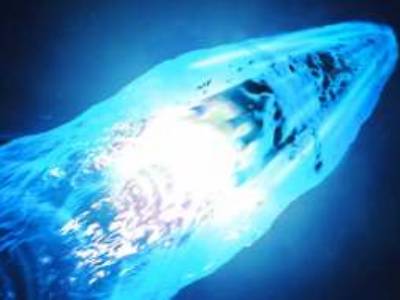Cavity Deflation
This technology modifies water-borne projectiles to reduce turbulence and noise associated with the collapse of air cavities that form around the projectile, a concern in commercial and military applications, and increase efficiency of movement and energy.
Problem
When a fast-moving projectile enters a body of water, the water separates from and closes around it, forming a trailing air cavity which, as the ambient external water pressure increases, causes the trailing cavity to reduce in size until it collapses, creating turbulence, pressure disturbance, and associated noise. This disturbance is particularly undesirable when carrying out military operations, which require a high degree of stealth. Trailing cavities can persist for up to 100 seconds, depending on the depth and speed of the projectile. For commercial and naval applications, the time to deflate the cavity can have a substantial impact on the projectile’s efficiency. A torpedo, for instance, may have compartments that need to be flooded with fluid in order for the chemical engines to ignite.
Solution
The technology modifies the physical structure of the projectile, causing the water to separate from the projectile at a lower point on the projectile, reducing the disturbance associated with cavity deflation, expediting cavity deflation, and increasing efficiency.
Benefits
The technology allows a projectile to enter and travel through water with minimal disturbance, decreases the time taken for trailing cavities to deflate, ensuring that fluid-activated compartments are activated in a timely manner, and decreases noise of collapse, allowing for greater stealth and efficiency.
Applications
The technology’s utility in improving the stealth and efficiency of water-entering projectiles will be particularly applicable in military applications and the autonomous underwater vehicle industry.

Contact
Questions about this technology including licensing availability can be directed to:
Alan Edwards, MA, JD
Manager, Technology Transfer Services
(435) 797-2328 alan.edwards@usu.edu
USU ID C19008
Inventors
Tadd Truscott, Ph.D.
Mechanical and Aerospace Engineering
Areti Kiara, Ph.D.,
Mechanical and Aerosapce Engineering
Emma Fraley, M.S.
Nathan Speirs, Ph.D.
Rafsan Rabbi, Ph.D. Candidate
Development Stage
TRL 3

